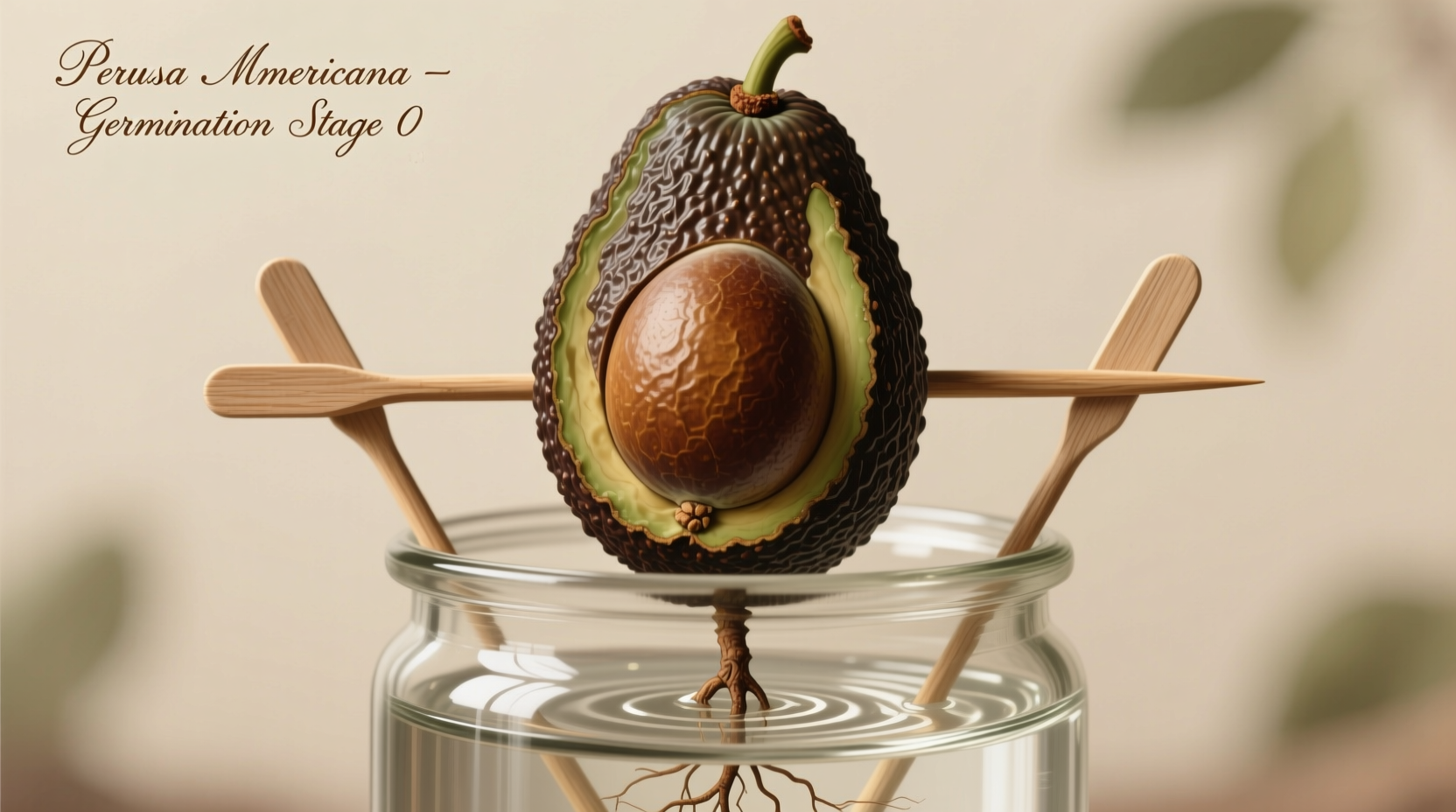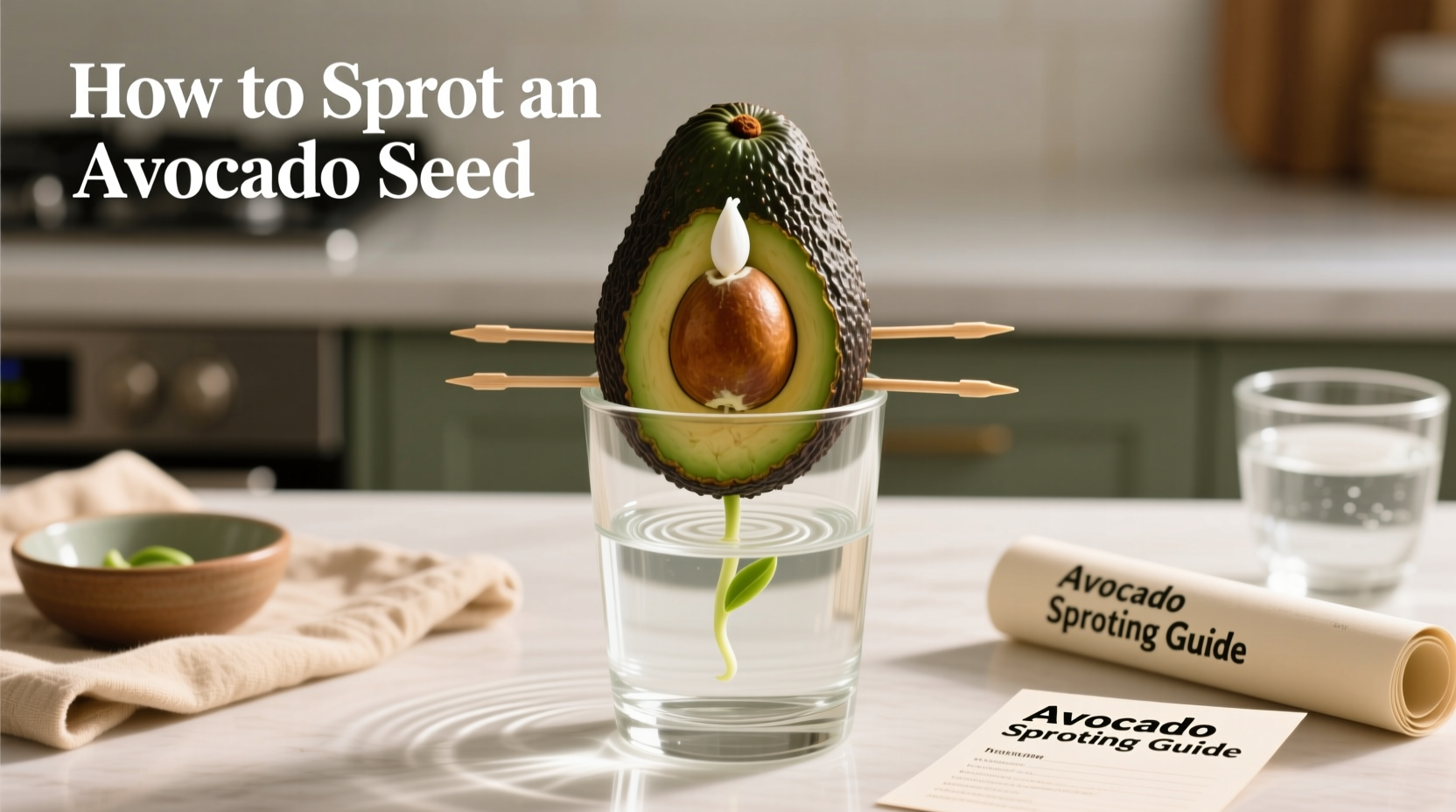Why Sprouting an Avocado Seed Is Easier Than You Think
Avocado trees (Persea americana) originated in Mexico and Central America, where they've been cultivated for over 10,000 years. The sprouting process taps into the seed's natural germination cycle, which begins when moisture penetrates the hard outer shell. Contrary to popular belief, you don't need special gardening skills—just consistent attention to water levels and proper seed orientation.
What You'll Need: Simple Materials Checklist
Before starting your avocado seed sprouting journey, gather these basic items:
- Fresh avocado seed (pit) from a ripe fruit
- Clean drinking water (filtered preferred)
- 3-4 wooden toothpicks
- Glass or jar (wide-mouth works best)
- Patience (germination takes 3-6 weeks)
| Method Type | Success Rate | Time to Sprout | Required Attention |
|---|---|---|---|
| Water Suspension | 85% | 4-6 weeks | Weekly water changes |
| Soil Planting | 65% | 3-4 weeks | Daily moisture checks |
| Moist Paper Towel | 75% | 2-3 weeks | Daily monitoring |
Step-by-Step: Water Method (Most Reliable for Beginners)
Step 1: Prepare Your Avocado Seed Properly
After enjoying your avocado, gently remove the seed and wash off all fruit residue using lukewarm water. Avoid using soap or harsh scrubbing, which can damage the seed's protective layer. The University of California Agriculture and Natural Resources confirms that residual fruit sugars can promote mold growth during sprouting (UC ANR, 2023).
Step 2: Identify Top and Bottom
The flatter end is the bottom (where roots emerge), while the pointed end is the top (where the stem grows). This orientation matters—placing the seed upside down prevents proper growth. If unsure, position the seed sideways; it will self-correct within days.

Step 3: Suspend in Water
Insert 3-4 toothpicks evenly around the seed's circumference at a slight downward angle. Place the seed in your glass with the bottom half submerged in water (about 1 inch deep). The top half must remain dry to prevent rot.
Step 4: Create Optimal Conditions
Place your setup in a warm location (70-80°F / 21-27°C) with indirect sunlight. Change the water every 5-7 days to prevent bacterial growth. Within 2-4 weeks, you'll notice the outer shell cracking and the taproot emerging.
Troubleshooting Common Sprouting Problems
Why Your Avocado Seed Isn't Sprouting
If after 6 weeks you see no growth, consider these factors:
- Dried-out seed: Avocado seeds lose viability when completely dried. Always start with fresh seeds.
- Insufficient water: The bottom must remain consistently submerged.
- Cold temperatures: Below 65°F (18°C) significantly slows germination.
- Old seed: Seeds from grocery store avocados may be weeks old—fresher is better.
Mold Prevention Strategies
White mold on the water surface is common but manageable:
- Change water more frequently (every 3-4 days)
- Add 2-3 drops of hydrogen peroxide to the water
- Gently wipe mold from the seed with a soft cloth
- Ensure proper air circulation around the setup
What Happens After Sprouting: Next Steps
Once your seed has sprouted and the stem reaches 6-7 inches:
- Cut the stem back to 3 inches to encourage stronger growth
- Wait for new leaves to emerge (usually within 2 weeks)
- Transfer to a 10-inch pot with well-draining soil
- Plant with the top half of the seed still exposed
- Water when top inch of soil feels dry
According to the Royal Horticultural Society's research, avocado plants grown from seed typically take 5-13 years to produce fruit (RHS, 2024). However, they make attractive houseplants with proper care, reaching heights of 6-8 feet indoors.
Advanced Tips for Faster, Healthier Growth
- Temperature boost: Place near a heat source (but not direct radiator) to maintain 75-80°F (24-27°C)
- Light optimization: Provide 6-8 hours of bright, indirect light daily
- Water quality: Use filtered or distilled water to avoid chlorine damage
- Root stimulation: Add a rooting hormone to the water during first week
When to Consider Alternative Methods
The water method works for most beginners, but these situations might warrant different approaches:
- Dry climates: Paper towel method maintains consistent moisture
- Time constraints: Soil planting skips the transplant step
- Multiple seeds: Paper towel method allows space-efficient sprouting
Frequently Asked Questions
How long does it take for an avocado seed to sprout?
Most avocado seeds sprout within 3-6 weeks using the water method. The paper towel method often shows results in 2-3 weeks, while soil planting typically takes 3-4 weeks. Factors like seed freshness, temperature, and moisture levels significantly impact timing.
Why is my avocado seed rotting instead of sprouting?
Rotting usually occurs when the entire seed is submerged in water or when water isn't changed regularly. Only the bottom third should be underwater, and water should be refreshed weekly. Mold growth on the water surface can also lead to seed rot if not addressed promptly.
Can I sprout an avocado seed that's already dried out?
Dried avocado seeds have significantly reduced viability. For best results, use seeds from freshly eaten avocados. If your seed has dried slightly, try soaking it in room-temperature water for 24 hours before starting the sprouting process to rehydrate the outer layer.
Do I need to remove the brown skin from the avocado seed?
No, the brown outer skin (testa) protects the seed during germination. Removing it can damage the seed and reduce sprouting success. This protective layer will naturally split and fall off as the seed sprouts.











 浙公网安备
33010002000092号
浙公网安备
33010002000092号 浙B2-20120091-4
浙B2-20120091-4